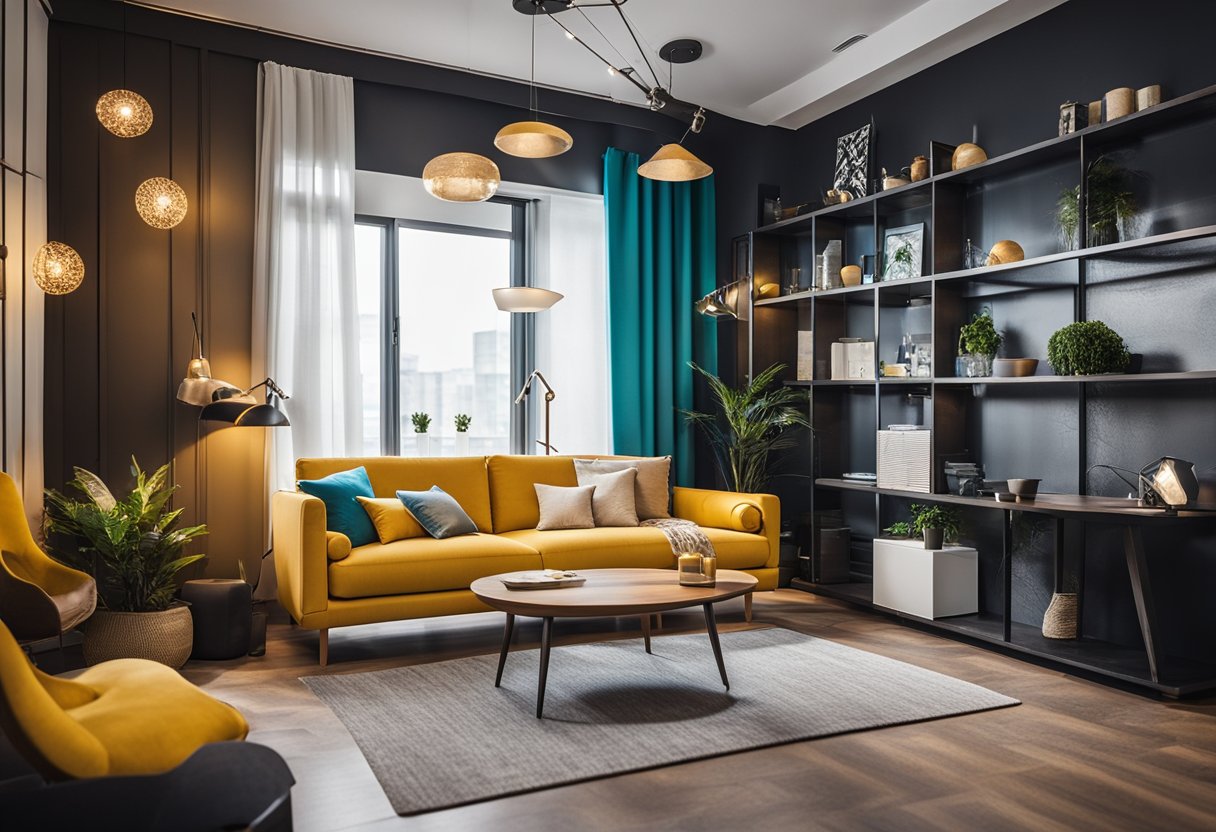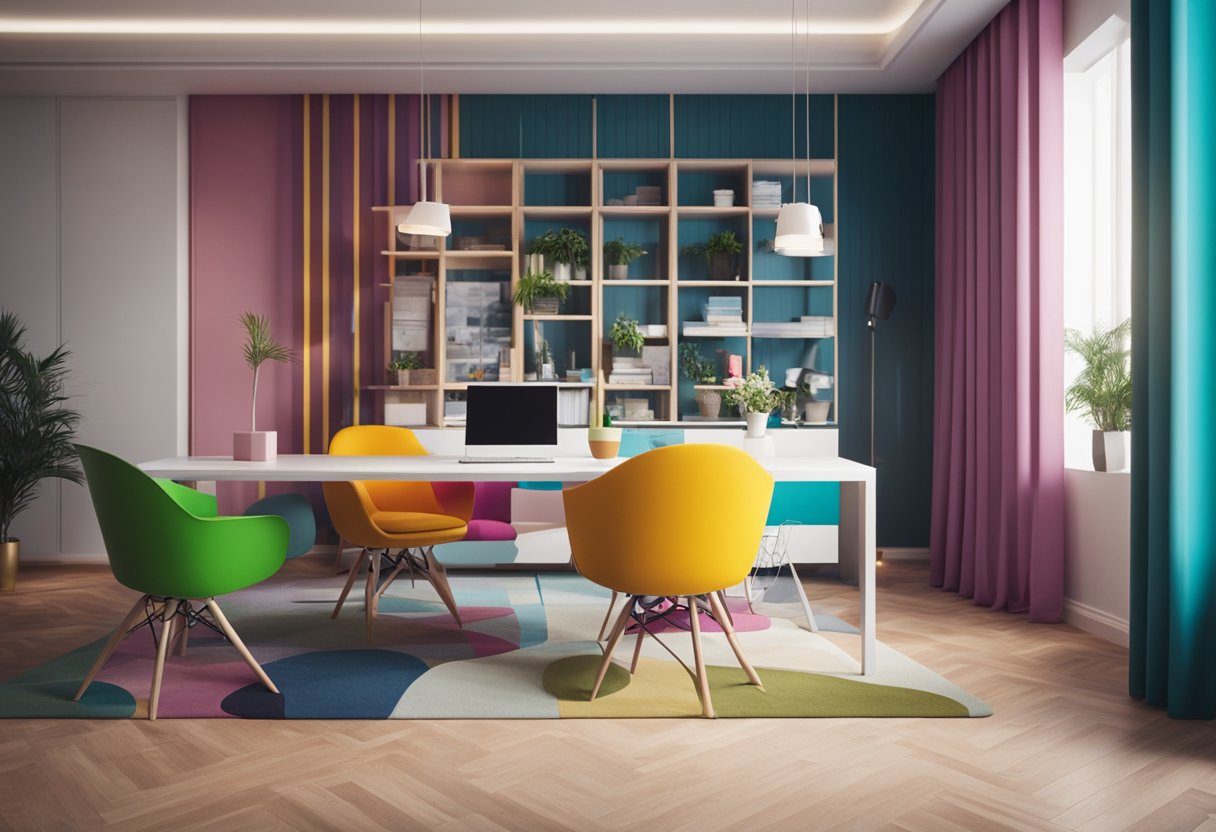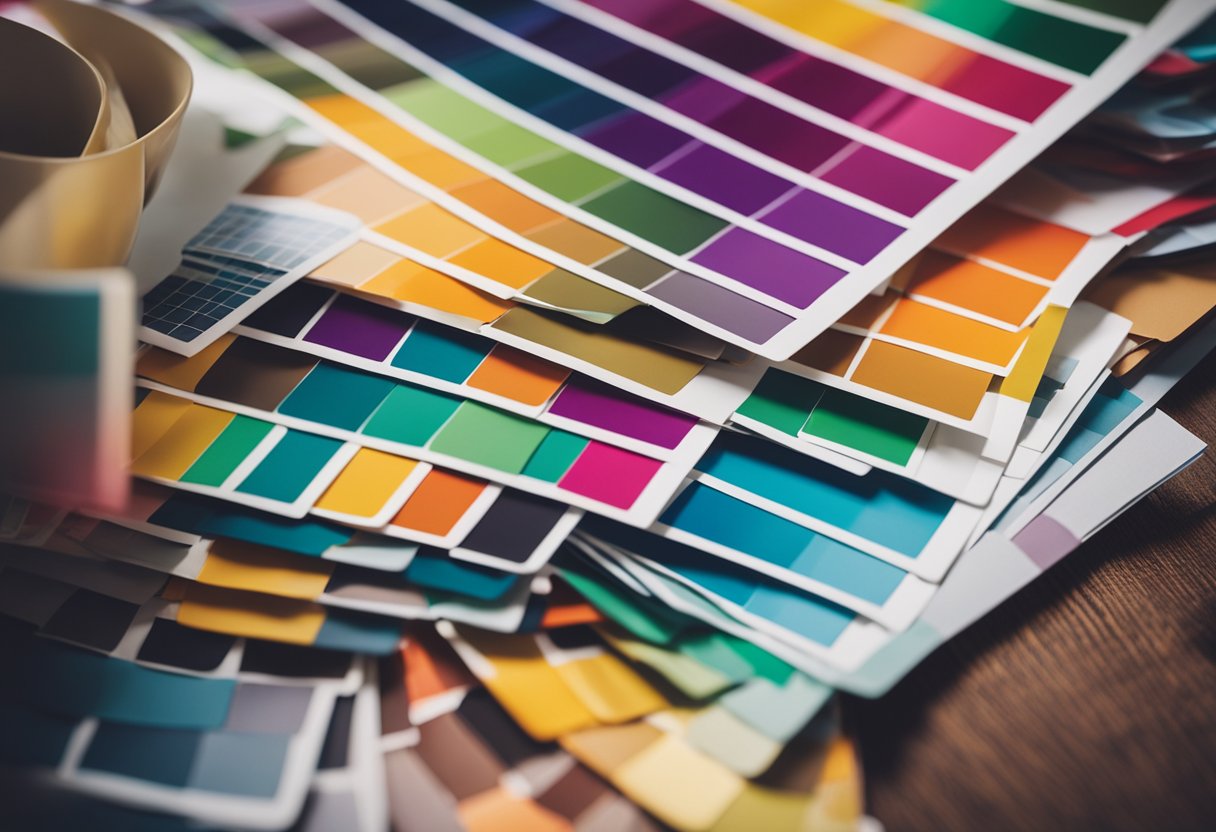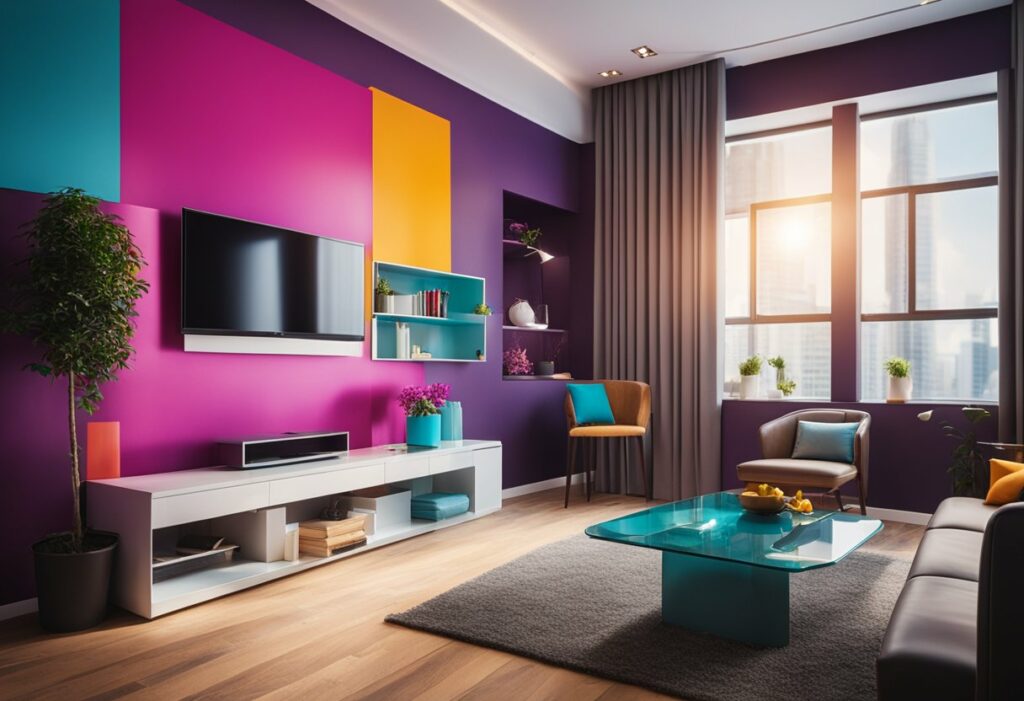Color in Interior Design: The Ultimate Definition Guide!
Colour plays an important role in interior design. It can set the mood of a room, make a space feel cozy or spacious, and even affect a person’s emotions. Understanding the fundamentals of colour in interior design is crucial to creating a cohesive and visually appealing space.

Fundamentals of Colour in Interior Design include the colour wheel, colour harmony, and the psychology of colour. The colour wheel is a tool that helps designers choose colours that work well together. It consists of primary, secondary, and tertiary colours, and can be used to create monochromatic, complementary, or analogous colour schemes. Colour harmony is the process of combining colours in a way that is pleasing to the eye, while the psychology of colour explores how different colours can affect a person’s mood and behaviour.
Applying Colours in Interior Spaces involves considering factors such as lighting, texture, and the purpose of the room. Light can affect the way colours appear, while texture can add depth and interest to a space. Different colours can also be used to create different moods in a room. For example, warm colours like red and orange can create a cozy and inviting atmosphere, while cool colours like blue and green can make a space feel calm and relaxing.
Key Takeaways
- Understanding the fundamentals of colour in interior design is crucial to creating a cohesive and visually appealing space.
- The colour wheel, colour harmony, and the psychology of colour are important concepts to consider when designing with colour.
- Applying colours in interior spaces involves considering factors such as lighting, texture, and the purpose of the room.
Fundamentals of Colour in Interior Design

Colour is one of the most fundamental and influential aspects of interior design. It can transform a space by creating a mood, highlighting specific features, and making a room feel more spacious or intimate. Understanding the basics of colour theory and psychology can help you make informed decisions when designing a space.
Understanding Colour Theory
Colour theory is the study of how colours interact with each other. The primary colours are red, blue, and yellow. Secondary colours are created by mixing two primary colours. For example, mixing red and blue creates purple. Tertiary colours are created by mixing a primary colour with a secondary colour. For example, mixing red with purple creates red-purple.
The colour wheel is a tool that shows the relationship between colours. It is divided into warm and cool colours. Warm colours, such as red, orange, and yellow, create a sense of energy and excitement. Cool colours, such as blue, green, and purple, create a sense of calm and relaxation.
The Psychology Behind Colours
Colours can also have a psychological impact on people. For example, red is often associated with passion and excitement, while blue is associated with calmness and trustworthiness. Understanding the psychology behind colours can help you choose the right colours for a particular space.
Hue refers to the purest form of a colour, such as bright red or deep blue. Shades are created by adding black to a hue, while tints are created by adding white. Tone refers to the lightness or darkness of a colour. Chroma refers to the intensity or purity of a colour.
Creating a colour palette involves choosing a group of colours that work well together. Colour harmony is achieved by using colours that are related to each other on the colour wheel, such as analogous colours or complementary colours.
In summary, understanding the fundamentals of colour in interior design is essential for creating a successful design. By understanding colour theory and psychology, you can make informed decisions when selecting colours for a space. Using a well-chosen colour palette can transform a space and create a specific mood or atmosphere.
Applying Colours in Interior Spaces

When it comes to interior design, colour is one of the most important elements that can make or break the overall look and feel of a space. The right colour scheme can create a warm and inviting atmosphere, while the wrong one can make a room feel cold and uninviting. In this section, we will discuss how to apply colours in interior spaces to create a cohesive and visually appealing design.
Colour Schemes for Different Rooms
The colours you choose for your interior spaces should be based on the purpose of the room. For example, the bedroom is a space where you want to feel relaxed and calm, so it’s best to use colours that promote tranquillity and restfulness. Blue and green are excellent choices for a bedroom as they are known to have a calming effect on the mind and body.
On the other hand, the kitchen is a space where you want to feel energised and inspired. Warm colours like red, orange, and yellow are great choices for a kitchen as they create a sense of energy and warmth.
The living room is a space where you want to feel comfortable and relaxed, so it’s best to use colours that promote warmth and coziness. Neutral colours like beige, grey, and white are great choices for a living room as they create a calming and inviting atmosphere.
If you have a home office, you want to choose colours that promote productivity and focus. Blue and green are excellent choices for a home office as they are known to enhance concentration and creativity.
Effects of Colour on Space and Mood
The colours you choose for your interior spaces can have a significant impact on the mood and atmosphere of the room. Warm colours like red, orange, and yellow create a sense of energy and excitement, while cool colours like blue, green, and purple create a sense of calm and tranquillity.
The lighting in a room can also affect the way colours are perceived. Natural light can make colours appear brighter and more vibrant, while artificial light can make colours appear dull and muted.
In small spaces, it’s best to use light colours as they create a sense of openness and space. Dark colours can make a small room feel even smaller.
The colours you choose for your interior spaces should also reflect your personality and style. Bold and vibrant colours are perfect for those who want to make a statement, while neutral colours are perfect for those who prefer a more understated look.
In conclusion, applying colours in interior spaces is an exciting aspect of interior design that can greatly affect the overall mood and atmosphere of a room. By choosing the right colours for each space, you can create a cohesive and visually appealing design that reflects your personality and style.
Frequently Asked Questions

How does colour psychology impact interior design choices?
Colour psychology plays a significant role in interior design choices. Colours have the power to affect our moods, emotions, and behaviour. Warm colours like red, orange, and yellow can create a sense of energy and excitement, while cool colours like blue and green can evoke a feeling of calmness and relaxation. Understanding the psychology of colours can help interior designers create a desired atmosphere and mood in a space.
What are the fundamental colour rules to follow in interior design?
There are several fundamental colour rules to follow in interior design, including the 60-30-10 rule, which suggests using 60% of a dominant colour, 30% of a secondary colour, and 10% of an accent colour. Another rule is to use complementary colours, which are opposite each other on the colour wheel, to create a harmonious and balanced look.
Why is colour so crucial in the realm of interior design?
Colour is crucial in interior design because it has the power to transform a space and create a specific mood or atmosphere. The right colour choices can make a room feel more spacious, cozy, or energizing. Colour can also be used to highlight architectural features or create a focal point in a room.
Could you explain the colour theory as it applies to interior design?
Colour theory is the study of how colours interact with each other. In interior design, colour theory is used to create a harmonious and balanced look. The colour wheel is a tool used to understand colour theory. It consists of primary colours (red, yellow, blue), secondary colours (orange, green, purple), and tertiary colours (yellow-green, blue-green, red-purple, etc.). Colours that are next to each other on the colour wheel are analogous and can be used to create a cohesive look, while colours that are opposite each other are complementary and can create a bold and striking contrast.
In what ways do colour and light interact within interior design?
Colour and light interact in interior design in several ways. The type of light source can affect how colours appear in a space. Natural light can make colours appear brighter and more vibrant, while artificial light can create a warm or cool tone. The colour of walls and furnishings can also affect how light is reflected and absorbed in a space, creating a different atmosphere and mood.
How do different colours influence the ambiance of a space in interior design?
Different colours can influence the ambiance of a space in interior design. Warm colours like red, orange, and yellow can create a sense of energy and excitement, while cool colours like blue and green can evoke a feeling of calmness and relaxation. Neutral colours like white, beige, and grey can create a sense of simplicity and elegance. The right colour choices can transform a space and create a desired atmosphere and mood.



